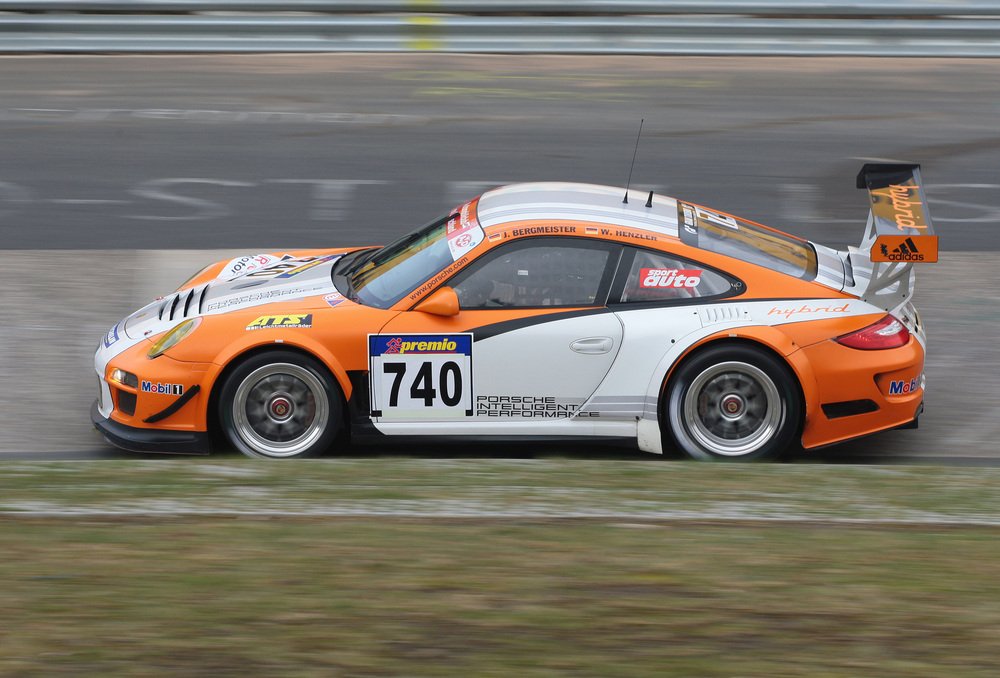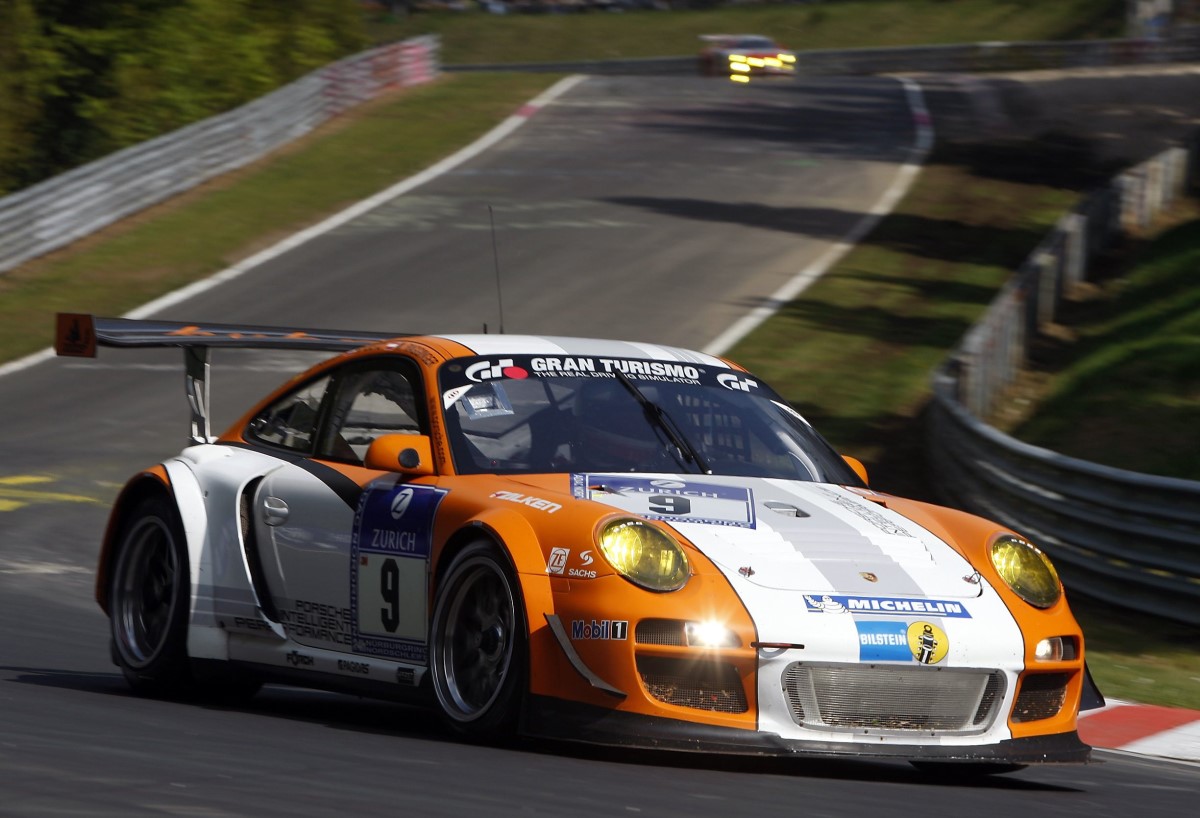Porsche 911 GT3 R Hybrid to Race in the USA and China
 |
 |
Porsche factory drivers Timo Bernhard (Germany) and Romain Dumas (France), along with former Porsche factory and current Audi pilot Mike Rockenfeller (Germany) – winners of this year's 24 Hours of Le Mans – return to the American Le Mans Series (ALMS) as teammates in the Porsche 911 GT3 R Hybrid for the October 2 Petit Le Mans race at Road Atlanta.
The innovative Porsche 911 GT3 R Hybrid features two electric motors on the front axles, each developing 60 kilowatts to supplement the 480 horsepower normally-aspirated rear-mounted engine.
At the 1,000 mile or ten hour race (whichever comes first) which serves as the finale for the American Le Mans Series season, the Porsche 911 GT3 R Hybrid will not be eligible for points, as hybrid technology is not yet included in the GT regulations.
"Our priorities are to further develop the hybrid technology and to optimize the fuel consumption under racing conditions. Nevertheless, I'm very interested to see how we compare to the GT2 cars," says Timo Bernhard.
"Nowhere is the competition in the GT segment as hard as it is here in the USA," adds Dumas.
As a driver pairing, Bernhard and Dumas have already notched up many historical victories, including the ALMS title in the LMP2 prototype class in 2007 and 2008, the overall win at the 2008 Sebring 12 Hours, as well as three overall victories at the Nürburgring 24 hour race from 2007 to 2009. In January, Rockenfeller claimed victory in a Porsche-powered Daytona Prototype at the 24 Hours at Daytona race.
The Porsche 911 GT3 R Hybrid, which demonstrated the potential of its groundbreaking technology over the first 22 hours and 15 minutes at this year's Nürburgring 24 hour race and led the overall classification for more than eight hours, exemplifies the philosophy of "Porsche Intelligent Performance". Under braking, the 911 GT3 R Hybrid converts kinetic energy into electrical energy and stores it in a flywheel that spins up to 40,000 rpm. During acceleration, this energy is delivered to the front wheels, supporting the combustion engine. This leads to a reduction in fuel consumption, increasing the cruising range and lessens the need for refuelling pitstops.
07/21/10 Following the impressive performance at the Nürburgring 24-hour race where the Porsche 911 GT3 R Hybrid demonstrated the potential of its groundbreaking technology over 22 hours and 15 minutes, and led the overall classification for more than eight hours, the orange and white liveried 911 racer will now travel to the USA and Asia.
Porsche has received an invitation to contest the season final of the American Le Mans Series, the race series featuring the world's fastest sport cars, at the 'Petit Le Mans' at Road Atlanta on October 2. The race runs over a distance of 1,000 miles or a maximum of ten hours. The Porsche 911 GT3 R Hybrid will not be eligible for points, as hybrid technology is not yet included in the GT regulations.
For November 7, Porsche then plans to race the 911 GT3 R Hybrid at the season final of the new Le Mans International Cup, the six hour race in Zhuhai, China. Again here, the vehicle is not competing for points.
"After the 911 GT3 R Hybrid's fantastic performance at the Nürburgring 24 Hours, we are now eager to gain more experience with the hybrid technology on a variety of race tracks," says Hartmut Kristen, Head of Porsche Motorsport. "At the same time, we would like to show fans and customers in our most important markets how our 'race lab' performs under racing conditions," adds Kristen.
The Porsche 911 GT3 R Hybrid, featuring two electric motors at the front axle each developing 60 kilowatts to supplement the 480 horsepower normally-aspirated rear-engine, expressly typifies the philosophy of "Porsche Intelligent Performance": Under braking, the 911 GT3 R Hybrid converts kinetic energy into electrical energy and stores it in a flywheel. During acceleration, this energy is automatically delivered to the front wheels, supporting the combustion engine. This leads to a reduction in fuel consumption and increases the cruising range. Moreover, drivers can manually utilize the stored energy with a boost-paddle on the steering wheel for overtaking.
